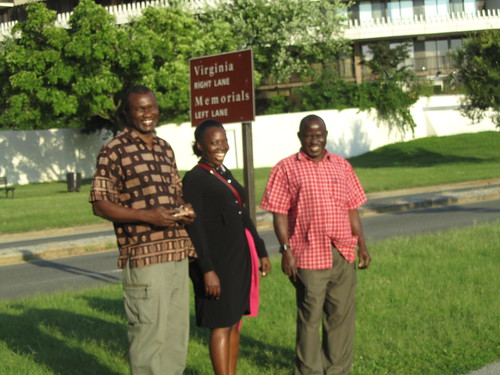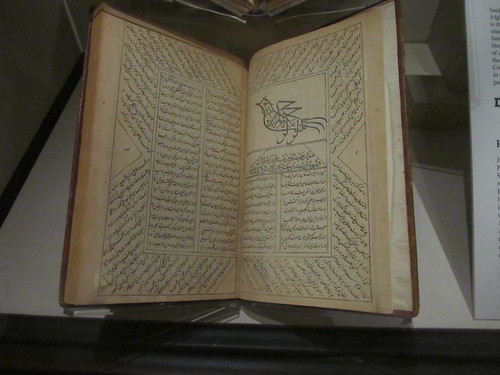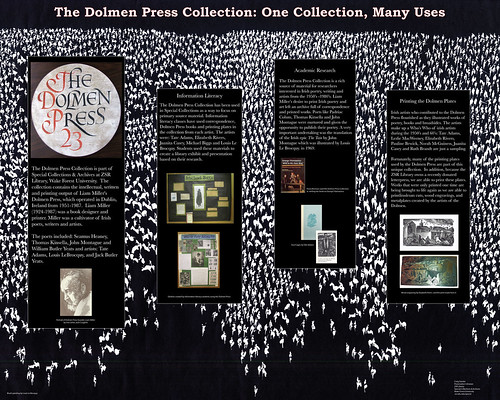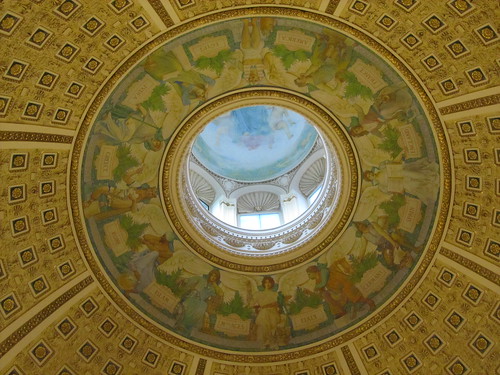This article is more than 5 years old.

Martin Luther King Jr. Memorial
I attended the joint SAA conference in Washington, DC last week. The weather was great and so was the conference. In the opening plenary, Miriam Nisbet and David Cuillier discussed the “State of Access.” Nisbet, Director of NARA’s Office of Government Information Services, has worked with the Freedom of Information Act and openness during her entire career. She believes openness means a transparent and collaborative organization. Nisbet is involved with the Open Government Partnership, which tries to achieve transparency, including access to government information, passing laws and implementing them. She emphasized three ideas:
1. Records Management- This is a push in federal government to reform how records are maintained, including a push to make them electronic. She would like to build in access from the beginning of this process.
2. Open data- This is a push to pay attention to and promote information as a strategic asset and get this information out. Archivists and librarians are critically important in this push.
3. Freedom of information Act- This act provides an opportunity for the public to speak up.
David Cuillier, from the School of Journalism at the University of Arizona, made the point that one third of news stories rely on government data. Ciullier believes these stories make the world better, so it is important to get this information out. He believes this information can lead to greater public engagement. Cullier stated that Public Information officers in agencies are trying to control their message, and become very political which keeps some information from the public. Ciullier said that the Freedom of Information Act still does not work very well. Redacting is used by lawyers and others to prevent information from being available. This keeps many journalists from even using it.

In DC, there are lots of people taking lots of photos. Usually, one politely pauses as they snap the image, before continuing down the sidewalk. I like to politely stop and also snap a photo-it makes them laugh!
Preventive Conservation in the Archives-Broad Approaches for a Big Impact
The recent idea of the “more product, less process” paradigm doesn’t usually include conservation. This session discussed using this idea in the preservation/conservation realm.
Fletcher Durant, New York University, believes risk management is at the heart of this issue. Different collections have different vulnerabilities, and every repository has its own risk portfolio. Durant analyzes risk and takes actions to manage risks and available resources. He advised getting a monitor and collecting environmental data. This helps you plan for the future. Durant also advised getting to know your facilities staff to set up a line of communication about your HVAC and any issues. He strongly advised setting an example with your food policy.
Priscilla Anderson, Harvard University Preservation, develops stakeholders across the institution to help with the difficult process of making policy and guidelines. The highest cause of damage to collections is caused by handling. So, for example, Harvard has a policy where they open rolled items only to the part you need to see. Additional strategies are removing only one folder at a time and keeping camera cords and straps away from collections. Anderson said to prepare for your next emergency by training staff.
Sarah Stauderman, Smithsonian Institution, uses surveys to plan and improve conditions. Benchmarking can be used to compare repositories, and make recommendations about care or training to try to improve the preservation IQ.
Laura McCann, New York University, believes hands-on work can be used to protect the object. At the Repository level- changing air filters, cleaning, and removing food can help. At the Collection level, avoid inappropriate housing or oversized containers. McCann built internal dividers and containers out of blue board for their collections for Item level protection (custom containers and supports using internal storage in standard archival boxes).

Persian Book Exhibit at Library of Congress
I attended the Preservation Section Committee meeting, where we discussed trends in the preservation of AV materials. The speakers were Robert Horton, Associate Deputy Director for Library Services,IMLS; Karen Cariani, Director of the Media Library at WGBH in Boston; and Carl Fleischhauer, the American Memory Project at the Library of Congress.
I presented a poster on the Dolmen Press Collection at the conference, demonstrating the various ways we have used it at ZSR Library (LIB100, printing, research). I was really pleased with the response to the poster and met many people who knew of this collection and had great ideas to further promote its use.
Documenting the Epidemic:Preserving and making accessible HIV/AIDS History
A wonderful panel of experts presented on their attempts to document and preserve the history of the AIDS epidemic. Somehow, during the difficult times of the 1980’s, these individuals managed to realize that someone should try to preserve the history of the epidemic. Victoria Harden, National Institutes of Health, was very concerned that documentation may be lost about the epidemic, treatment and developing drugs to treat aids. Harden helped hold a conference and published a book on the proceedings called Aids and the Historian in 1989. She also helped with instituting an oral history archive on the AIDS epidemic called NIH SIDS Oral Histories.
Pauline Oliveira, University of California, San Francisco, discussed the Aids History Project at her library. They document news, activists and papers from clinicians and researchers because UCSF Hospital had Ward 86, which became the first AIDS clinic in the US.
Ginny Roth, National Library of Medicine described collecting four decades of material including posters, comics, books, pins and postcards.
Michael Oliveira, University of Southern California Libraries, discussed One National Gay and Lesbian archives and the good work they are doing to preserve the AIDS history. They collect periodicals, theatrical and art works, Act Up materials and newsletters.
This was an important and moving presentation.
Protecting Our Heritage: Holdings Protection Training for Your Institution
This presentation by staff from the National Archives at College Park, was great and covered strategies for preventing loss in your collections reading room. They covered how to approach suspicious individuals and tell them professionally you’ll be there if they need help. this lets them know you are watching them. If things seem very suspicious, you can perform a quality control audit to make sure nothing is missing. Bags, laptops, i-Pad covers, etc. are checked and a complete check is made to insure no original documents are missing. A fun and useful part of this presentation was an exercise where we got the chance to approach one of the presenters and question them.
The All conference reception at the Library of Congress in the Great Hall was spectacular!



6 Comments on ‘2014 Archives-Records: Ensuring Access COSA-NAGARA-SAA Joint Meeting’
Craig, thanks for a great conference report! (and some wonderful photos!) The AIDS history project sounds amazing, and your poster looked wonderful!
That sounds like an awesome conference. I’m glad there are people out there (like you) who are concerning themselves with preserving and ensuring access to our history and heritage. Cool photos too!!
Nice report on your conference, Craig. Good job on the poster!
I enjoyed reading about the risk management methods and protection training. I hope we don’t have to ever go to frisking our patrons and putting in an airport scanner 🙂
I enjoyed your report! Thank you!
Thanks Craig!